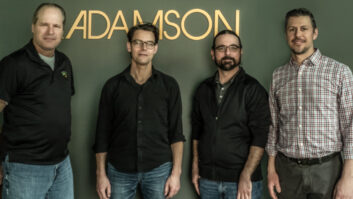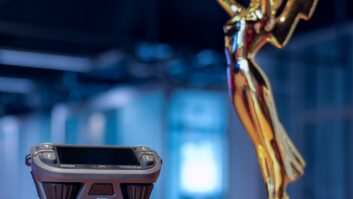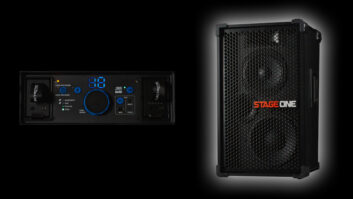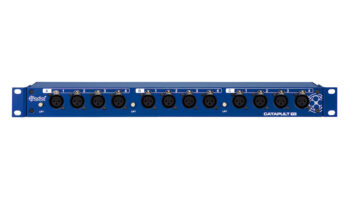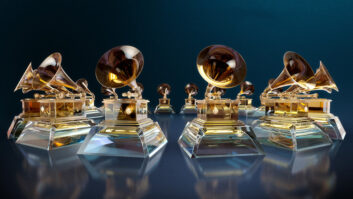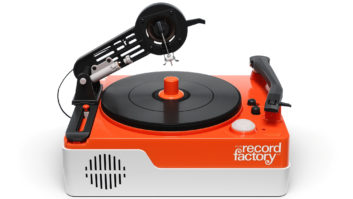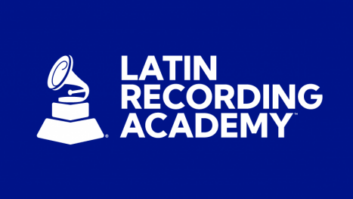Some things just aren’t right. Take, for instance, canned orange juice. Someone should really put a stop to that. Another evil that simply will not go away is lying with numbers. Okay, I guess I mean “stretching the truth” with numbers. Now, we all know that a sufficiently motivated person can make any statistic look good to the uninformed. Even I have been known to embellish concepts a bit-all for the greater good, I assure you.
Here’s what I’m talking about. All the new electronic gear, audio and otherwise, that you find in the marketplace is digital, with analog mostly relegated to the vintage or boutique buyer. From the Lightpipe-equipped low end for the DIY musician to the stuff sporting a MADI spigot and hefty price tag, it’s digital. And never has there been so much hype about so little.
Let’s suppose that you’re in the market for some new equipment. Who isn’t, after all, always lusting after the shiny and new? Or, let’s say that you want to become more informed about your chosen vocation. No, not playing scorching leads on your new Tele, Bubba-being an “engineer.” Of course, the audio industry has its own reality distortion field whereby most so-called engineers have never designed a single tool/engine/device. Does that mean I’m an automotive engineer because I can operate one? Not quite. As you probably know, the engineer title we share with other, more technical people is derived from a time in the distant past when poodles roamed the earth unfettered and we actually had to build and maintain our equipment. These days, though, all you have to do is head over to Sammy’s Sound Shack, fork over the plastic and walk away with your dream box of choice, without a solitary shred of knowledge about how, internally, said dream box performs its miracles.
Anyway, lots of products at Sammy’s are sold as x-number of bits or such-and-such a sample rate, but that really doesn’t tell you much. The truth is, as always, not black and white, but numerous shades of gray. In general, all digital gear has the same basic advantages: good multigenerational noise and distortion performance with high amplitude signal, theoretically perfect archival longevity and an ever-increasing price/performance ratio. For now, let’s look at that first, distinctive attribute, the one that’s fundamentally different from analog. That “perfect sound forever” thing.
A device that has a 24-bit I/O can be advertised as a 24-bit product. But wait, isn’t the AES/EBU standard defined as having a 24-bit payload or essence? Yup, for as long as my pea brain can remember. Needless to say, the I/O word length has nothing to do with what happens to the data once it’s inside the box. With even the fanciest gear, you could have accidentally set the output word length to truncate to 10 bits with no dither and the AES/EBU output would still be a 24-bit output. Only the first ten most significant bits would carry any useful information, though. And, my, how bad it would sound.
Sample rate specs are also suspect, though less so. All things being equal, a product that operates at 96 kHz should have wider unity gain bandwidth than that same product operating at 48 kHz. Well, so what? I certainly can’t hear a sine wave above 20 kHz! But is that all there is to our sense of hearing? I can’t say with authority that the increased bandwidth alone “sounds better,” but I can say that my ears tell me a well-designed piece of gear sounds better operating at 176.4 kHz than it does at 44.1 kHz. Theory tells us that it should exhibit less group delay or phase distortion when operating at higher sample rates, but no one knows the true reason or even if the “sounds better” effect is statistically significant.
Okay, how about word length? That parameter is, in some ways, more obvious and yet more obscure. Our hearing has, on a good day, about 120 dB, or 20 bits’ worth, of dynamic range. In the past, we’ve gotten along just fine with analog tape that had, on a good day, half that dynamic range. Of course, double-ended noise reduction addresses that shortcoming, but why do we need 144 dB of dynamic range in the AES essence if we can only hear 120?
It’s those doggone numbers. A minimalist recording-say, a low-noise analog source feeding a high-quality converter and released, unedited, to the consumer-wouldn’t need more than 16 bits to convey the information reasonably. Most music, however, isn’t produced that simply. Even classical releases, those pristine records of acoustic events, are usually edited so aggressively that making 1,000, 2,000 or even 3,000 edits in an hour-long performance is not unusual. So? In the digital world, almost any process performed on the data, whether it’s editing, EQ, gain changes or mixing, results in longer word length data than what you had when you started; 6×6=36. A one-digit number times a one-digit number equals a two-digit number. The same is true with AES data: You make your 16-bit recording 1 dB louder and, boom, you’ve got some extralow-order bits filled with “the remainder,” as my grade-school math teacher called it. You need extra “headroom,” as it used to be called in the analog days, to allow for the vagaries of day-to-day production. A 24-input digital desk needs to pad any AES input by 18 dB immediately just to maintain a reasonable gain structure for downstream processing and summing.
And that’s not all. Noise is usually spec’d as an absolute noise voltage or indirectly as a signal-to-noise ratio. Very rarely are any specs released that refer to the nature of the noise-its spectral makeup, its amplitude vs. frequency or whether or not it’s correlated with the signal. That last noise characteristic can be particularly annoying and comes into sharp focus when lossy codecs are involved.
Phase response and harmonic and IM distortion are also important gauges of how the device will perform but do not directly predict how it will subjectively “sound” unless the performance borders on pathological. On the other hand, that blanket statement isn’t true for jitter. Though most manufacturers fail to state anything about their products’ jitter performance, again, a spec probably wouldn’t say much about the sound since, like noise, there are so many aspects of jitter behavior. But, in general, jitter has a lot to do with the subjective quality of multichannel audio, because it has a lot of impact on the frequency vs. phase response, which in turn affects imaging and soundstage. Alas, many engineers are content with their pan pot-synthesized, two-dimensional world, and so is the consumer.
But, I wander from the subject at hand…and that subject is simply this: Don’t believe sales and marketing hype, good or bad. Start learning about the underlying technology that you rely upon every day. And remember, the laws of physics have not been repealed just yet. For most of us, purchasing new gear means careful deliberation rather than impulse buying. You’ll have to live with your purchase for quite a while. If you don’t possess the expertise or aural acuity require to evaluate some box properly, then ask or buy someone who does. Your biz card sez “engineer,” right? Start acting like one!
MACWORLD EXPO THIS MONTHMACWORLD Conference & Expo/ New York 2000 is happening July 18-21, at the Jacob K. Javits Center in New York City. In addition to plenty of exhibits, seminars and forums, the convention now features expanded special interest areas, including the new Music and Audio showcase, featuring the latest Mac tools for music and audio creation, production, and processing; mastering; CD authoring; MP3 publishing; and networking. There will also be celebrity concerts held every day in the Music and Audio interest area. Visit www.macworldexpo.com.
CYCLING ’74 ACQUIRES MAXCycling ’74 announced the conclusion of an agreement with Opcode Systems (a subsidiary of Gibson) and the French music research institute IRCAM, in which Cycling ’74 acquired the publishing rights to the MAX graphical interactive programming environment for real-time music and multimedia.
MAX was originally developed at IRCAM in the late 1980s and was licensed to Opcode Systems in 1990, where future Cycling ’74 founder David Zicarelli then worked on development. Cycling ’74 has extended and complemented MAX’s MIDI and multimedia support with MSP, a set of synthesis and signal processing extensions. The company has announced plans for a Windows release of MAX, later this year. For more information, visit www.cycling74.com.
PLUG.IN IN JULYThe fifth annual Plug.In online music forum is taking place this month, from July 24-25 at the Sheraton Hotel and Towers in New York City. The show focuses on business issues facing the music industry, and examines new technologies and trends. For program details, visit www.jup.com/events/.

